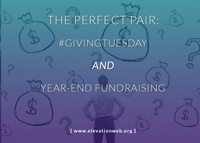This is a contributing post by Brad Wayland of BlueCotton
Want to raise money for a good cause? Crowdfunding may seem like an attractive option, but you need to be careful about using it. Here’s why.
In a lot of ways, crowdfunding has changed how charities work. The idea at their core – that people who believe in a cause will donate money towards it – aligns very well with nonprofits. Crowdfunding sites make it easier to raise money than ever before, and allow charitable organizations to reach a larger pool of donors than might otherwise be possible.
They are not, however, a quick-fix for all the challenges of running a charity. Nor are they the only tool you’ll need in your arsenal. In order to successfully utilize crowdfunding in your charity’s plans, you’ll therefore need to ask yourself a few questions first.
Which Platforms Will I Use?
There are tons of crowdfunding sites on the web – not all of them suited for charitable organizations. Kickstarter, for example, has rules about raising money for charity. When selecting a platform, such rules are the first thing you’ll need to look for – but there are a few other factors, as well.
- The platform’s history. How long the site’s been in operation, how many campaigns it’s published, how often it’s been targeted with allegations of fraud.
- Donor information. How and from where it will be collected and managed.
- Fees. Different crowdfunding platforms use different fee structures, with different charges and fees based on transactions, money raised, and so on.
- Flexibility. Look at your crowdfunding needs, and examine whether or not the platform can meet them.
- Marketing. How the platform will integrate with your marketing efforts, and what support the platform will offer for those efforts.
Is My Project Well Defined-Enough?
You want to raise money for a good cause. That’s awesome and admirable. But if you want to succeed, you need to offer your audience more than platitudes of assurance. You need something concrete – especially if you’re using crowdfunding.
How are you using the funds you raise? How much is being spent on marketing, web design, logistics, and so on? How much is actually going straight to the cause? What will you do to incentivize donors?
These are all questions you need to carefully consider the answer to – because they’re all going to come up during your campaign. The more transparent you are here, the better.
How Will I Support The Campaign Throughout Its Life-Cycle?
Last but certainly not least, you need to think about your entire campaign – not just the crowdfunding portion. How will you craft your messaging throughout? How will you maintain donor relationships after the campaign ends? What about at the beginning of the campaign? Will you contact past donors? What media outlets will you reach out to?
Closing Thoughts
Crowdfunding has changed the face of charity – but it’s not a cure-all. In order to truly enjoy the benefits it offers, you need to take a lot of details into account. Follow the advice outlined here, and you’ll be well and ready to take your charity online and beyond.



